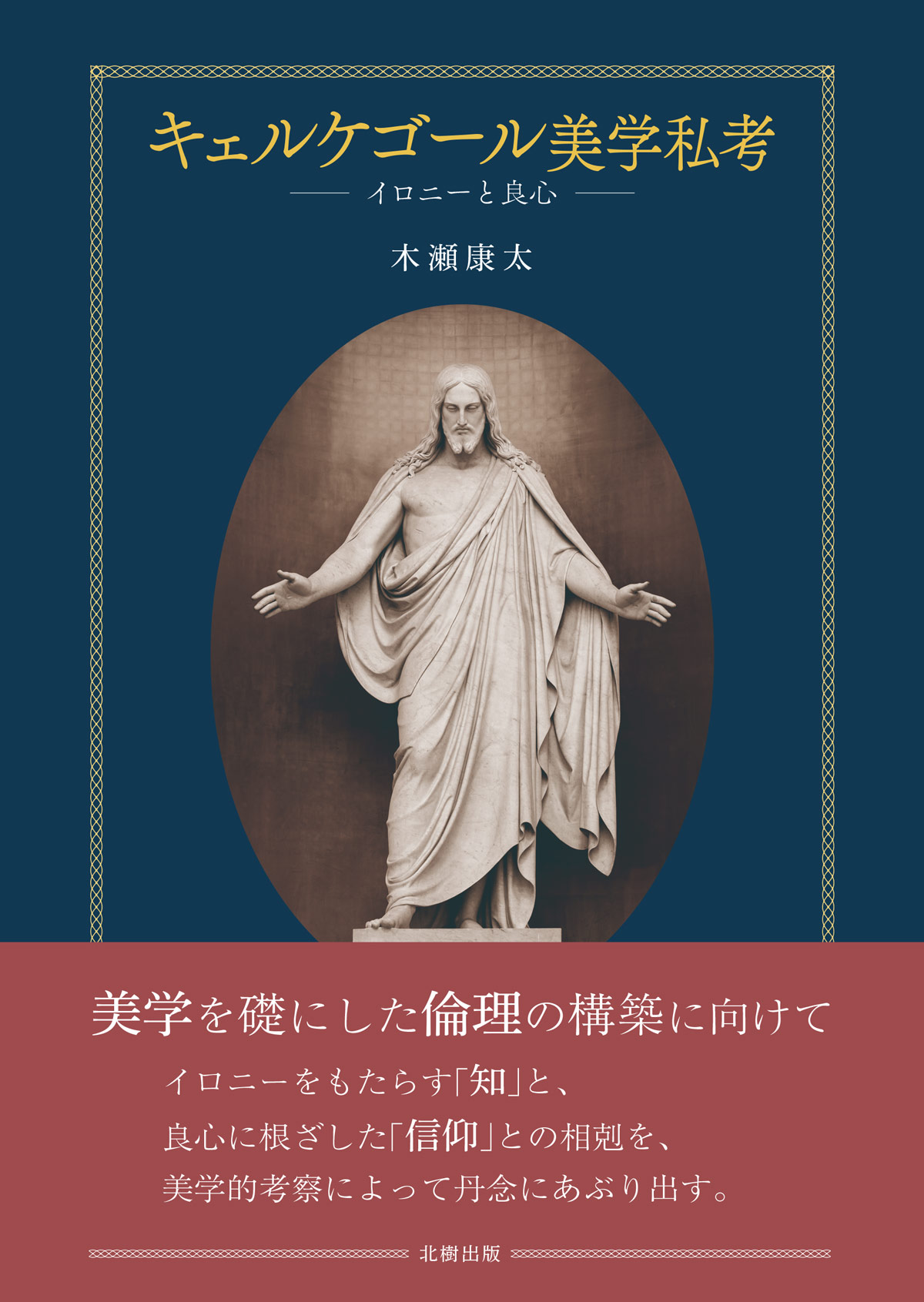
Title
Kierkegaard Bigaku Shiko (A Consideration of Kierkegaard’s Aesthetics - Irony and Conscience)
Size
240 pages, A5 format
Language
Japanese
Released
February 29, 2024
ISBN
978-4-7793-0737-9
Published by
Hokuju Shuppan
Book Info
See Book Availability at Library
Japanese Page
What should we do to overcome human spiritual dread, vanity, or alienation caused by the highly civilized modern society? The Danish religious thinker Søren Kierkegaard (1813-55) thoroughly examined this problem using his “existential” philosophy, that is, by analyzing the inner movements of human beings. However, in Japan, his method has been often reduced to the popularized discussion about human life policy.
Therefore, this book reconsiders Kierkegaard’s “existential” philosophy in terms of the tension between “knowledge” and “faith.” This tension has been an actively argued theme in Europe. However, “knowledge” is based on “reflection,” which promotes thinking with concepts and clarifies the contents of thinking, despite often separating the thinking human being from an actual phenomenon. Kierkegaard believed that abstraction by “reflection” causes a distance between concept and phenomenon and referred to this distance as “irony.”
However, Kierkegaard believed that “faith” demands conscience rooted in “immediacy,” which secures a sensory foothold for the thinking human being to recognize God. Kierkegaard defines “faith” as the sensory relationship between God and the human being, which arises paradoxically at the extreme of their spiritual alienation. Owing to this “faith” as a sensory foothold, the human being can concretize their “knowledge” based on their actuality.
This book regards the aforementioned human attitude produced by the cooperation between “irony” and “faith” as “aesthetics.” The German philosopher Alexander Gottlieb Baumgarten (1714-62) defined aesthetics as “science about sensory recognition.” Grounded in Baumgarten’s definition, this book takes an epistemological approach, which contrasts “reflective” thinking with sensory “immediacy.”
Part 1: The Philosophical Aesthetics of the Early Kierkegaard (The Theory of Irony) analyzes two types of irony as roots of human spiritual alienation. One is the irony of the human subjectivity from the actual objectivity (“the irony of the world”), and the other is the irony of the human subjectivity from their inner selfhood (“the irony of the life”). Kierkegaard traced back to the Socratic irony, and realized the impossibility of “quantitative” reconciliation of this human spiritual alienation.
Part 2: The Theological Aesthetics of the Post-Early Kierkegaard (The Theory of Conscience) reveals irony to be caused by human “knowledge” and paradoxically transferred from human beings to “the God-Man” by Christianity. Thus, the concept of “faith,” the sensory relationship between God and the human beings, is to be requested. To have this “faith” is not an exterior change of the human beings, but an interior, “qualitative” spring made by them.
Conclusion: Kierkegaard’s Aesthetics as Optics of Faith: Prospects for the Theory of Dignity suggests that we should renounce our own worldly teleology as much as possible. This renouncement is necessary to accept the concept of dignity, the gift from the eternal beings, such as Christian God. Dignity is an independent human ability to contemplate. Therefore, this book maintains the compatibility between freedom of human beings and necessity of the control by the eternal beings.
(Written by: KINOSE Kota / April 08, 2024)
Related Info
The 4th UTokyo Jiritsu Award for Early Career Academics (The University of Tokyo 2023)
https://www.u-tokyo.ac.jp/ja/research/systems-data/n03_kankojosei.html



